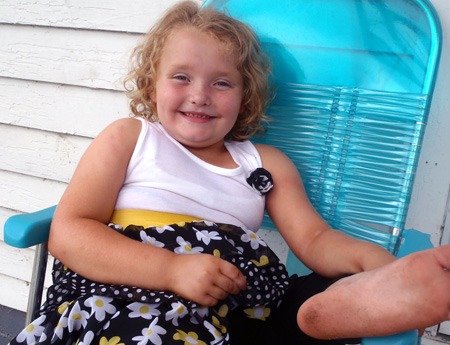Reality TV Walks Tricky Tightrope

In gambling parlance—and television programming is nothing if not a bettor’s business—I Am Cait is the closest thing reality TV has to a sure thing. The Caitlyn Jenner Vanity Fair cover, astonishing social media reaction and an amazing back story all led beautifully last week to the E! trailer for this eight-part series premiering July 26. In the clip, Jenner is seen putting on makeup and then driving through the area around her Malibu home. She muses about one day being normal, blending into society. Told she already is normal, Jenner declares, “Put it this way, I’m the new normal.”
Jenner offers living proof that the new normal for reality—television’s most malleable content genre—shifts daily. Its capacity to uncover stars in unlikely places and its modest cost structure reinforce its importance as producers and networks grapple with existential questions about TV’s long-term viability. In Jenner’s case, that means the adventures of one of America’s most celebrated Olympians, turned Kardashian paterfamilias, turned symbol of the transgender community, becomes a tangible, teachable television moment. No other genre could house such a story. But the truth is, no other genre needs a hit quite as badly.
I Am Cait enters a reality realm grappling with its own new normal, marked by ratings erosion, a shifting economic paradigm, digital audience distractions and an overwhelming sense of been-there, DVR’d-that. The once-Teflon genre is showing its age, as tired franchises decline faster than you can say, “You’re fired!” and a wider array of scripted, “Golden Age” content leeches away viewers.
But a more pressing issue wreaking havoc on reality’s bottom line is the scourge of scandal. Its inclusive nature means that despite network claims of due diligence, the attempts to bring ever more salacious, outrageous, edgy and uncategorizable fare to a seemingly willing public has led to continuous backlash. The 19 Kids and Counting molestation scandal is only the latest, and perhaps most insidious, example of a genre that continually tests the patience of even its most ardent supporters. Granted, the machine keeps rolling in the form of new series, and given its price point, it’s not going away anytime soon. But the genre is overdue for some kind of reset, given that networks are now in an almost constant state of damage-control readiness.
“What we realize is, we’re not perfect, and if we’re observing others, and if it’s going to be really reality, then we’re going to see them, blemishes and all, and sometimes the blemishes are not just acne,” says Bill Carroll, VP, director of programming, Katz Television Group.
Amy Winter, now executive VP and general manager of UP, was general manager of TLC during the early run of Here Comes Honey Boo Boo, which was later canceled in the wake of a child abuse scandal. The Duggar family saga reminds Winter of another TLC hit she worked with earlier—Jon & Kate Plus Eight. While one might think having only eight kids instead of 19 would make parenting a cinch, the very public Gosselin saga included the Gosselin’s ugly divorce and accusations of abuse. Longtime execs such as Winter—whose current network just premiered season two of Bringing Up Bates, about another family with 19 kids—are also often frontline vets of the reality TV damage control wars. “That’s true,” she says, adding with a chuckle, “and I have the scars to prove it.”
Counting Out 19 Kids?
Broadcasting & Cable Newsletter
The smarter way to stay on top of broadcasting and cable industry. Sign up below
Before the revelation that Jim Bob and Michelle Duggar’s oldest son Josh had inappropriately touched five underage girls, with four of them being his sisters—one when she was only 5—first came to light, 19 Kids and Counting was able to stand tall on its economic merits in terms of TLC’s overall ad revenue. In the time since, 19 Kids has taken on Titanic-level water, and the family and network are doing their best to keep advertisers from jumping ship. As the family’s devastating interview last week with Fox News’ Megyn Kelly proved, it’s not working. If the show dies (and since it is not currently in production, its fate may not be known for a while), one cause of death will be the wave of social media judgments that previously helped doom Honey Boo Boo and rocked A&E’s ratings giant Duck Dynasty.
Far beyond 19, a lot more problem children are populating the reality landscape. Despite extensive vetting of talent, there appears to be no end to reality stars who bend the law.
The genre boasts a growing roster of recent rap sheet infractions that in the last four months alone have involved DIY star Vanilla Ice (burglary), MTV’s Teen Mom 2 star Jenelle Evans (domestic violence charge, later dropped), TLC’s Return to Amish star Jeremiah Raber (drunk and disorderly conduct) and hip-hop star Nelly (felony drug possession), star of the BET series Nellyville.
Networks are often left to deal with the fallout—or work them into the “unscripted” script, as this week’s Nellyville episode is set to do—while silently banking on the idea that advertisers and viewers will regard the incidents as adding to reality’s already assumed level of crazy cred.
“If something outrageous happens and is considered to be scandalous but does not injure someone, it brings greater attention, and that’s what these shows are looking for,” says Carroll. “The only time you have a problem for producers is if they take you away in handcuffs and you can’t do the show.”
Networks themselves will also choose to air programs that seem to push a moral center off the rails. Some viewers have complained that CBS’ controversial series The Briefcase preys upon the needy, by making recipients of $101,000 choose whether to keep the money, or give it to someone needier. The network might consider dropping it…if the ratings weren’t so strong.
“It got beaten up a bit,” says Brad Adgate, senior VP of research at Horizon Media, “but ratings are the name of the game.”
At one point, it seemed like all of this sensationalism and rubbernecking would only make the great colossus of reality grow stronger. But now there is real erosion in the ratings (see box above), and the stark recognition that no new blockbusters have been launched since Duck Dynasty. Vast swaths of the available viewership (especially young males) have a host of other leisure-time options.
“There’s all sorts of competition out there,” Adgate says. “All these premium pay cable networks and [subscription video-on-demand] services don’t rely on much on unscripted shows.”
The networks that do, however, remain committed. Cable networks have continually rebranded around profitable franchises. E! became the home of the Kardashians, History sold success through Pawn Stars, MTV lured in the kids with Teen Mom and Bravo played home to the Real Housewives. At Discovery, where it’s all about adventure seekers—from Gold Rush to Deadliest Catch to the more titillating Naked and Afraid—the network remains all-in on the genre, regardless of any negativity.
“I think the storytelling of unscripted and documentaries has never been stronger, and I don’t believe it’s ever going away,” says Rich Ross, president of Discovery. “Whether it’s actors who are actors or people who are casts of unscripted reality shows, they’re human beings and things happen. I think you do your best to understand who the people are, you do background checks and you try to treat them respectfully. But we all recognize that people are human.”
Humanity could be the strong suit—and, in fact, the ray of hope for the entire reality sector—with I Am Cait. The show is following a reliable formula for reality success, blending a recognizable genre star with a surge of cultural interest and the comfort of an existing brand. Jenner has been announced as this year’s recipient of the Arthur Ashe Courage Award at the ESPYs, and she will make her first public appearance to accept on July 15 on ABC. True, the message of acceptance won’t get through to everybody during Cait’s eight episodes. But in a reality TV industry hungry for a good story line and a gaudy overnight rating, this series will be as welcome—and as normal—as it gets.
REALITY CHECK
While the reality sector remains a key part of the TV landscape, new hits are in short supply. According to a Ratings Intelligence analysis of Nielsen data, here are some of the topline causes for concern:
■ Of the 10 top-rated primetime series on broadcast TV from last Sept. 22 to June 3, only one (The Voice) is unscripted.
■ The highest-rated rookie cable reality show of the year is Spike’s Lip Sync Battle, and it’s only the 21st highest-rated cable reality show on TV this year, averaging less than 1 million live/same day viewers.
■ On broadcast, the highest-rated rookie reality program is NBC’s I Can Do That, but it is No. 50 overall.
Rob has written for Broadcasting+Cable since 2006, starting with his work on the magazine’s award-winning 75th-anniversary issue. He was born a few blocks away from Yankee Stadium … so of course he’s published three books on NASCAR, most notably, Full Throttle: The Life and Fast Times of NASCAR Legend Curtis Turner. He’s currently the special projects editor at TV Guide Magazine. His writing has appeared in The Washington Post and his origami art has been in The Wall Street Journal. He lives with his family in New Jersey and is writing a novel about the Wild West.

